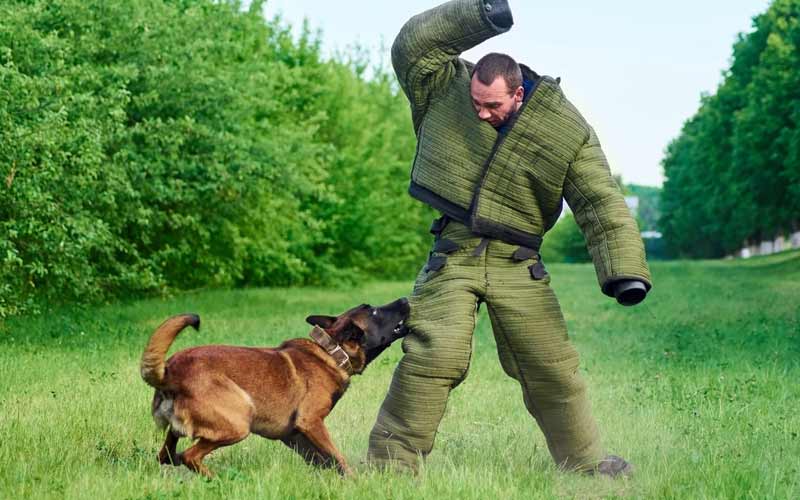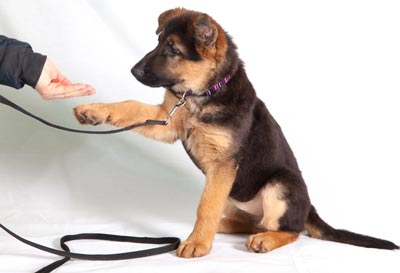The Ultimate Guide to Dog Training: Tips for Every Stage of Your Dog’s Life
The Ultimate Guide to Dog Training: Tips for Every Stage of Your Dog’s Life
Blog Article
Novice's Guide to Successful Dog Training in the house
Effectively training a canine at home requires a nuanced understanding of canine habits and effective interaction approaches. Establishing clear training objectives, making use of high-quality incentives, and keeping consistency across member of the family are crucial components. Additionally, integrating training into everyday regimens can improve both engagement and retention. However, lots of novice instructors encounter difficulties that may prevent development. To browse these complexities efficiently, it's important to check out numerous crucial aspects that can change your technique and bring about an unified connection with your family pet. What basic principles should every newbie understanding to ensure success?
Recognizing Canine Habits
Comprehending canine habits is essential for efficient training and cultivating an unified relationship between people and their canine buddies. Dogs communicate mainly via body movement, vocalizations, and facial expressions, making it important for proprietors to analyze these signals properly. Acknowledging habits such as tail wagging, roaring, or shrinking can offer understandings into a canine's mood and intents.

Usual behavioral issues, such as aggression, anxiousness, or extreme barking, typically stem from misunderstandings or unmet needs. Observing and attending to these issues immediately can protect against acceleration and make certain a favorable training experience. By promoting a deep understanding of pet behavior, proprietors can tailor their training approaches to match their canine companions, inevitably bring about a happy and well-behaved pet.
Essential Training Tools
A well-appointed training room can substantially improve the performance of pet training in your home. Essential training devices guarantee that both the canine and the instructor can involve in efficient sessions that promote knowing and bonding.

Purchasing a strong leash and a comfy, well-fitting collar or harness is vital for safety and control. These devices assist develop limits and guarantee the canine remains safe throughout training. Additionally, a designated training location, without diversions, aids focus for both the instructor and the dog.
Educating help such as training pads, cones, or agility equipment can additionally enhance the experience by presenting range and challenges. Having a notebook or electronic app for tracking progression can be vital, enabling you to note successes and locations for improvement. Utilizing these essential tools will certainly produce a positive training environment and lay the structure for effective understanding.
Developing an Educating Routine
Developing a regular training regimen is vital for efficient pet dog training in the house. A well-structured routine not only aids in reinforcing wanted behaviors yet likewise offers your canine with a feeling of safety and security and predictability. To develop a reliable training regular, begin by identifying specific training goals, such as basic commands, chain walking, or house-training.
Pick a marked time each day for training sessions, learn the facts here now preferably when your pet dog is receptive and sharp. Sessions ought to be short, about 5 to 15 mins, to preserve focus and avoid fatigue. Uniformity in timing and environment will enhance your dog's understanding experience.
Integrate training right into daily activities to enhance skills. For instance, practice commands throughout strolls or mealtime, which incorporates discovering into all-natural routines. Additionally, stay adaptable and adjust the routine as necessary, accommodating your pet dog's energy degrees and state of mind.
Favorable Reinforcement Methods
Favorable support techniques are fundamental to reliable dog training, promoting preferred behaviors through rewards instead than penalty. This technique makes use of favorable stimuli, such as deals with, appreciation, or play, to urge dogs to duplicate certain actions. The keystone of this approach is timing; rewards should be provided right away following the desired actions to produce a clear association.
When applying favorable support, it is vital to pick benefits that are motivating for your dog. High-value deals with, such as little items of hen or cheese, can be especially reliable during training sessions. In addition, varying the incentives can maintain your pet dog's interest and excitement.
Beginning with straightforward commands, like "rest" or "stay," and progressively development to much more complicated jobs. Uniformity is crucial; make certain that all relative utilize the exact same commands and reward systems to avoid confusion.
Furthermore, it is vital to remain client and avoid irritation. Pets, like people, learn at their own speed. By cultivating a helpful training environment via favorable support, you can improve your pet dog's learning experience while enhancing the bond in between you and your fuzzy companion, laying the foundation for successful training end results.
Usual Educating Difficulties
While training a pet dog at home can be a gratifying experience, it frequently comes with a set of usual challenges that can test both persistence and uniformity. One widespread issue is disturbance. Dogs may become quickly sidetracked by sounds, activities, or perhaps scents in their setting, making it tough to maintain their emphasis during training sessions.
An additional challenge is variance in commands and reinforcement. If family members make use of different signs or benefits, it can confuse the pet and prevent description progress. Developing a unified approach is necessary for efficient communication.
Additionally, dogs can experience stress or stress and anxiety, especially if they do not understand what is expected of them. This can cause undesirable behaviors, such as chewing or barking.
Finally, the timing of support is important (Dog training). Delayed benefits can decrease the performance of favorable support, as pet dogs might fall short to attach the behavior with the incentive
Overcoming these difficulties needs dedication, clear interaction, and an organized training plan. Acknowledging and attending to these common obstacles will lead the means for a more delightful and successful training experience at home.
Conclusion
Finally, successful pet dog training at home demands a detailed understanding of canine habits and reliable interaction methods. By developing clear training goals and using top notch deals with along with positive reinforcement, the training process ends up being a lot more fulfilling for both the dog and the instructor. Persistence, adaptability, and uniformity are essential parts that promote understanding. Inevitably, integrating training right into everyday regimens boosts the bond in between pet and proprietor, making the experience both enjoyable and productive.
Developing a constant training routine is important for reliable dog training at home.Positive support methods are essential to reliable pet dog training, advertising wanted behaviors via incentives rather than penalty (Dog training). By fostering a supportive training atmosphere with positive reinforcement, you can boost your pet's learning experience while strengthening the bond in between you and your furry friend, laying the foundation for successful training outcomes
In final thought, successful canine training at home necessitates an extensive understanding of canine habits and reliable communication techniques. By developing clear training goals and using high-grade deals with alongside favorable support, the training important source process ends up being more gratifying for both the instructor and the canine.
Report this page